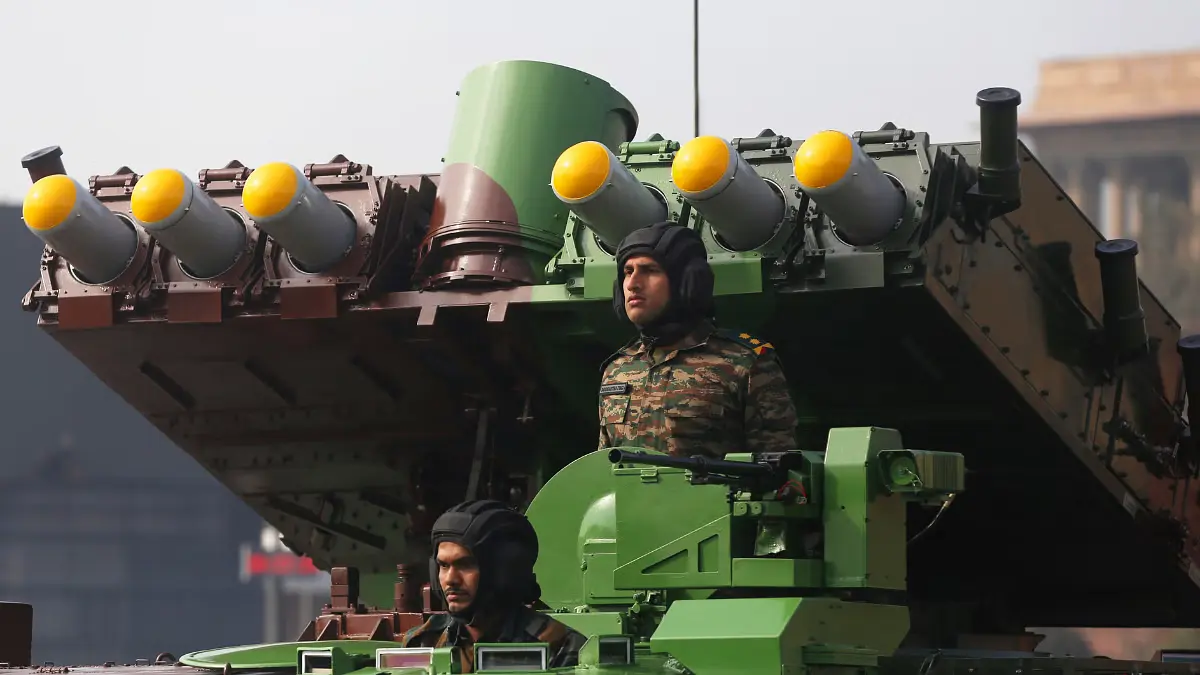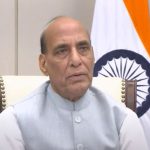The enduring military standoff between India and Pakistan represents not just a bilateral rivalry but a geopolitical flashpoint with global implications. Rooted in the partition of 1947, which led to immediate conflict over Kashmir, the two nations have fought three full-scale wars (1947, 1965, 1971) and numerous skirmishes, including the 1999 Kargil War. By 2024, this rivalry had evolved into a sophisticated balance of conventional forces, nuclear deterrence, and asymmetric tactics, influenced by economic disparities, technological advancements, and shifting alliances. While India leverages its economic growth for military modernization, Pakistan focuses on resilient, cost-effective defenses and strategic partnerships. This analysis draws on data from 2024, incorporating developments into 2025, such as the brief May conflict and new defense pacts, to provide a comprehensive view.
Historical Context: From Partition to Nuclear Parity
The India-Pakistan military dynamic traces back to the British Raj’s division, creating two nations with shared borders but divergent paths. India’s larger size and economy allowed it to build a expansive military, while Pakistan, facing existential threats, prioritized defence spending relative to its GDP. The 1971 war, resulting in Bangladesh’s creation, marked a turning point, humiliating Pakistan and prompting its nuclear program. Both went nuclear in 1998 India with Operation Shakti and Pakistan responding shortly after ushering in an era of mutual assured destruction.
By the 2000s, crises like the 2001-2002 standoff and the 2008 Mumbai attacks tested doctrines. India’s “Cold Start” strategy aimed at rapid, limited strikes, while Pakistan developed tactical nuclear weapons to counter invasion threats. In 2024, these doctrines remained relevant, with India focusing on integrated theater commands for multi-domain operations and Pakistan emphasizing full-spectrum deterrence.
The 2025 Crisis: A Four-Day Flashpoint
Tensions boiled over in 2025 with a terrorist attack on April 22 in Pahalgam, Jammu and Kashmir, killing 26 tourists. Attributed to Pakistan-based militants, it prompted India’s Operation Sindoor on May 7. India launched cruise missiles (BrahMos and SCALP-EG), precision artillery, and drones against nine targets in Pakistan. Pakistan reported 40 civilian deaths; India claimed over 100 terrorists eliminated without admitting collateral damage.
Pakistan retaliated with a counterair operation, downing up to four Indian aircraft using Chinese PL-15 missiles and possibly HQ-9 systems. Escalation followed along the Line of Control, involving small arms, artillery, tanks, and anti-tank missiles, causing over 50 deaths, mostly civilians. Drone warfare intensified: Pakistan deployed attacks, largely repelled by India, while India used Israeli Harpy and Harop drones to target Pakistani air defences.
The peak came on May 9-10, with Pakistan firing Fatah-I and Fatah-II ballistic missiles and Yiha-III drones, met by Indian strikes on 11 military sites using drones, missiles, and rockets. Satellite imagery confirmed damage. A ceasefire was brokered on May 10 through U.S. diplomacy, with President Trump announcing it, though India disputed details on broader talks. Casualties were limited compared to past wars, but the conflict highlighted firsts in missile and drone use, testing nuclear thresholds without overt signaling.
International reactions were swift: The U.S. mediated effectively, while China’s role remained ambiguous, possibly supplying Pakistan’s tech. The crisis ended without territorial changes but reinforced caution, with both sides learning from technological performances.
Detailed Conventional Force Comparison
In 2024, India’s military outpaced Pakistan in most metrics, per Global Firepower and SIPRI data. India’s Power Index (PwrIndx) score was superior, reflecting broader capabilities. Below is a tabulated breakdown based on 2024-2025 estimates:
| Category | India | Pakistan | Advantage |
|---|---|---|---|
| Defence Budget (2024) | $86.1 billion (2.3% of GDP) | $10.2 billion (2.7% of GDP) | India |
| Active Personnel | 1,455,550 | 654,000 | India |
| Reserve Personnel | 1,155,000 | 550,000 | India |
| Total Personnel | 5,137,550 | 1,704,000 | India |
| Tanks | 4,614 | 3,742 | India |
| Armored Vehicles | 12,000+ | 9,000+ | India |
| Artillery Pieces | 4,000+ (incl. self-propelled) | 4,472 (strong in self-propelled) | Pakistan (self-propelled) |
| Fighter Aircraft | 538 | 387 | India |
| Attack Helicopters | 37 | 56 | Pakistan |
| Total Aircraft | 2,210 | 1,413 | India |
| Aircraft Carriers | 2 | 0 | India |
| Destroyers/Frigates | 27 | 9 | India |
| Submarines | 16 (incl. nuclear) | 8 | India |
| Oil Production | 767,000 bbl/day | 90,000 bbl/day | India |
| Logistics (Airports) | 346 | 151 | India |
Nuclear Capabilities: A Delicate Balance
Nuclear arsenals add gravity to the rivalry. As of early 2025, India had 180 stored warheads (up from 172 in 2024), emphasizing credible minimum deterrence and no-first-use. Pakistan held 170, with a doctrine allowing first use against conventional threats. Both continue modernizing: India’s Agni-V ICBM (5,000+ km range) and canisterized MIRV-capable missiles enhance second-strike; Pakistan’s Ababeel MIRV counters defences. Delivery systems include aircraft, missiles, and submarines India’s INS Arihant class provides sea-based deterrence. The 2025 crisis showed restraint, with no nuclear alerts, but experts warn of escalation risks in future flare-ups.
Alliances and External Influences
India’s partnerships with the U.S., Russia, and Quad members bolster tech access, including joint ventures like BrahMos. Pakistan’s ties with China (via CPEC) provide JF-17 fighters and HQ-9 systems, while the September 2025 Saudi-Pakistan Mutual Defence Pact commits mutual aid, potentially drawing Saudi into conflicts. Renewed U.S.-Pakistan military ties, including aid, concern India, resetting calculus amid Indus water tensions. Geography favors Pakistan’s shorter supply lines but exposes it to Indian strikes, as seen in 2025.
Economic and Logistical Factors
India’s $3.9 trillion GDP (2024) supports sustained military growth, contrasting Pakistan’s $375 billion economy reliant on IMF bailouts. Logistics: India’s 346 airports and extensive roads aid mobility; Pakistan’s 151 airports limit reach. Oil: India’s 767,000 bbl/day production reduces vulnerability compared to Pakistan’s 90,000.
Implications and Future Outlook
The 2024 power analysis reveals India’s quantitative edge, but Pakistan’s qualitative improvements and alliances prevent complacency. The May 2025 conflict, costing lives and equipment, may induce caution but heightens arms races India invests in hypersonics, Pakistan in drones. Global stakeholders, especially the U.S. and China, play pivotal roles in de-escalation. Ultimately, diplomacy over Kashmir and terrorism remains key to averting catastrophe in this nuclear dyad.
Comparative Table of Recent Developments (2024-2025)
| Development | India | Pakistan | Impact |
|---|---|---|---|
| Missile Tests | Agni-V successful trials | Fatah-II operationalized | Enhanced deterrence |
| Drone Acquisitions | Additional MQ-9B Predators | Chinese Wing Loong II | Asymmetric warfare boost |
| Naval Expansions | Commissioned INS Arighat sub | Hangor-class subs from China | Sea denial capabilities |
| Alliances | Quad exercises | Saudi defence pact (Sep 2025) | Broader regional involvement |
| Post-Conflict Lessons | Improved air defences | Counterair successes | Tech-driven doctrines |
This table underscores ongoing buildups, with both nations prioritizing indigenous production India’s Atmanirbhar Bharat and Pakistan’s defence industry reforms.
In conclusion, while India appears dominant, the rivalry’s volatility demands balanced assessments. Counterarguments note Pakistan’s terrain advantages and rapid mobilization, but evidence leans toward India’s sustained superiority. Future stability hinges on dialogue amid economic pressures and global shifts.













